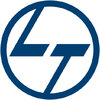


Siemens




Siemens Electrical GET Interview Questions and Answers
Q1. Difference between IDMT relay and transformer differential relay
IDMT relay is used for overcurrent protection while transformer differential relay is used for differential protection.
IDMT relay operates based on inverse time-current characteristic curve
Transformer differential relay compares the currents entering and leaving the transformer windings
IDMT relay is used for protecting electrical equipment from overcurrents
Transformer differential relay is used for detecting internal faults in transformers

Q2. What are the types of transformer losses
Types of transformer losses include copper losses, iron losses, and stray losses.
Copper losses: Also known as I^2R losses, occur in the copper windings of the transformer due to resistance.
Iron losses: Also known as core losses, occur in the transformer core due to hysteresis and eddy currents.
Stray losses: Occur due to leakage flux and imperfect magnetic coupling between the windings.
Examples: An example of copper losses would be heat generated in the transformer windings. A...read more

Q3. How solar energy in solar panels work
Solar panels convert sunlight into electricity through photovoltaic cells.
Solar panels contain photovoltaic cells that convert sunlight into electricity
When sunlight hits the cells, it excites electrons, creating a flow of electricity
The electricity generated can be used to power homes, businesses, or stored in batteries for later use

Q4. What is star delta Starter
Star delta starter is a type of reduced voltage starter used for starting high power motors.
Consists of two contactors - one for star connection and one for delta connection
Reduces starting current and torque on the motor
Commonly used in industrial applications for motors above 5 HP

Q5. Types of rotors in generators
Types of rotors in generators include salient pole rotor and cylindrical rotor.
Salient pole rotor has projecting poles with concentrated windings, used in low-speed applications.
Cylindrical rotor has distributed windings and is used in high-speed applications.
Other types include wound rotor and squirrel cage rotor.
Wound rotor has three-phase windings connected to slip rings, used in variable speed applications.
Squirrel cage rotor has short-circuited conductors, used in high-s...read more

Q6. working principle of generator
A generator works on the principle of electromagnetic induction to convert mechanical energy into electrical energy.
Generators use a magnetic field and a conductor to create a flow of electrons, generating electricity.
When the conductor moves through the magnetic field, it induces a current in the conductor.
This current is then collected and transferred through wires to power electrical devices.
Examples of generators include hydroelectric generators, wind turbines, and diesel...read more





Interview Process at Siemens Electrical GET

Top Electrical GET Interview Questions from Similar Companies





Reviews
Interviews
Salaries
Users/Month












